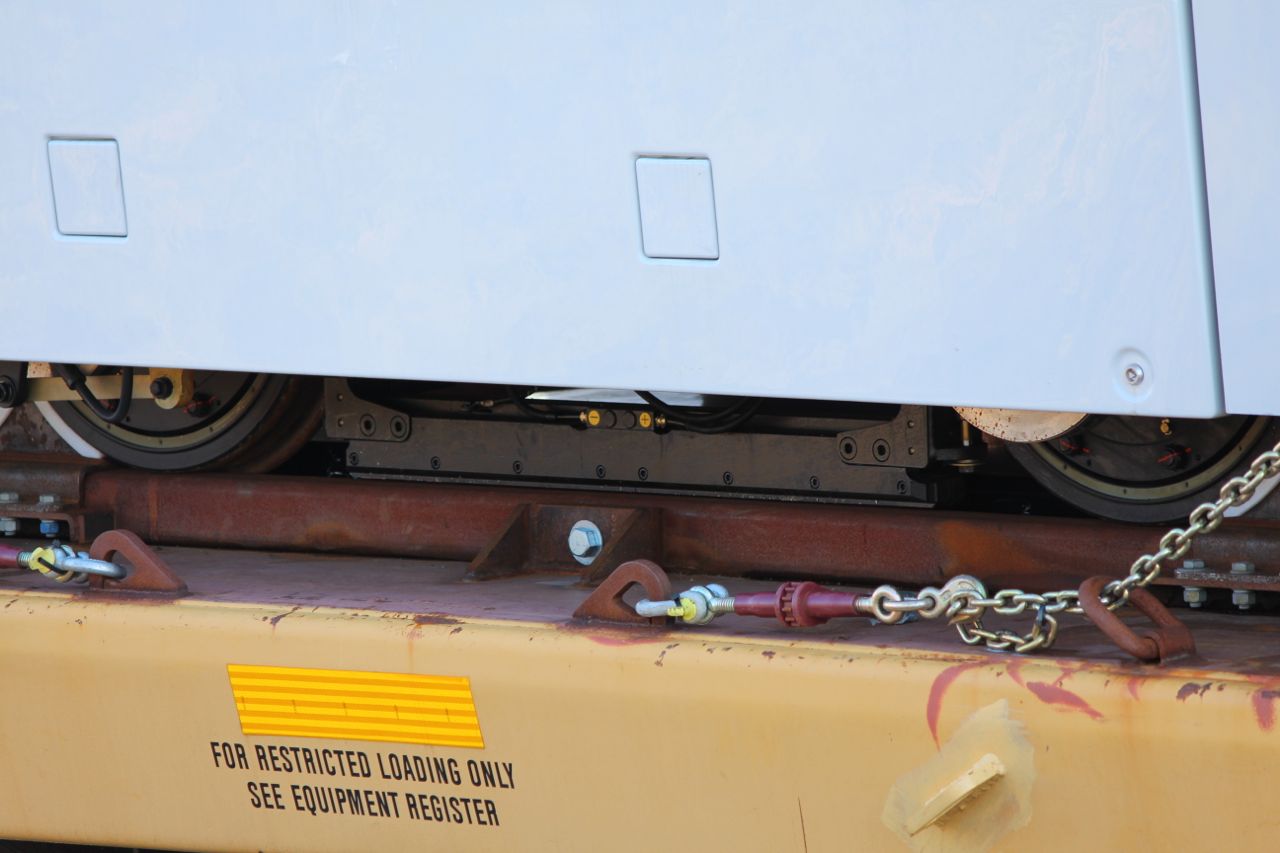Posts: 6,905
Threads: 32
Joined: Oct 2014
Reputation:
224
It is stunning, that's for sure! But once you have also stood up close to Seagram and Northfield, you realize that all 3 are "brown stone" and are very similar, in contrast to the very different glass designs for all the stops.
We still haven't seen a ceramic installation yet; the third tile type. I bet R&T will be the first if it's not already up. Scaffolding was up last time I was by.
Posts: 4,390
Threads: 15
Joined: Aug 2014
Reputation:
121
I've seen Seagram, which is a much darker brown and has more of a stripe look to it, and is distinctive enough to me.
I've yet to see Northfield, hopefully it also stands apart.
Posts: 10,274
Threads: 65
Joined: Sep 2014
Reputation:
295
The "three brown walls" are also not on stations next to each other, so I really don't think anyone will get "browned out" by them.
Posts: 6,905
Threads: 32
Joined: Oct 2014
Reputation:
224
Posts: 6,905
Threads: 32
Joined: Oct 2014
Reputation:
224
03-11-2017, 09:27 AM
(This post was last modified: 03-11-2017, 09:27 AM by Canard.)
Posts: 2,002
Threads: 7
Joined: Sep 2014
Reputation:
124
Do we know when #2 is going to show up?
Posts: 4,390
Threads: 15
Joined: Aug 2014
Reputation:
121
I think I heard July. This lets them check out any inherent bugs in #1 while they get the assembly line together in Millhaven.
Posts: 6,905
Threads: 32
Joined: Oct 2014
Reputation:
224
Well, that's not totally the reason (definitely they'll pass along any issues back to Millhaven over the next little bit), but the bays are already up and running in Millhaven. That's how long it will take to build them; the first four from there are already in production!
Posts: 6,905
Threads: 32
Joined: Oct 2014
Reputation:
224
03-11-2017, 04:31 PM
(This post was last modified: 03-11-2017, 04:42 PM by Canard.)
No need to apologize; I love talking about this stuff!
The motor will do all of the work in normal operation of decelerating and stopping the vehicle. The disc brake can be used as a holding brake (or in emergencies) to bring it to a more rapid stop. Additionally, there is an electromagnetic track brake which sits between the wheels. When current is applied to it, it locks hard against the rail, with much more force than would be available via friction due to gravity - only ever used in emergencies.
 Electromagnetic track brake between the wheels.
Electromagnetic track brake between the wheels.
AC motors like this can be very accurately controlled by their drive (called a Variable Frequency Drive, or VFD); it's what makes the high-pitched quiet "squeal" or "whine" on newer trains as they accelerate and decelerate. Some really nerdy folks like myself even get a kick out of the different noises that these types of systems make - my favourite being the 90, 120, 180, 240, 360 Hz startup tones of the Montreal metro trains... 
You can hear some of the motor noises very clearly in this great video by ErbosSan on YouTube:
Posts: 52
Threads: 0
Joined: Sep 2014
Reputation:
5
Thanks for the explanation!
Posts: 1,312
Threads: 2
Joined: Sep 2014
Reputation:
40
So anyone know why Weber between Queen and Ontario is still closed? I'd been out of town for a while and thought they'd got all the roads buttoned up at this point.
Posts: 7,577
Threads: 36
Joined: Jun 2016
Reputation:
196
(03-11-2017, 07:32 PM)clasher Wrote: So anyone know why Weber between Queen and Ontario is still closed? I'd been out of town for a while and thought they'd got all the roads buttoned up at this point.
Weber? Do you mean Duke?
I also thought they were open, at least one way.
Posts: 4,390
Threads: 15
Joined: Aug 2014
Reputation:
121
Duke is closed for hydro work - the surface LRT stuff is finished.
Posts: 495
Threads: 1
Joined: Jan 2015
Reputation:
20
Weber is definitely open. Went from Lincoln to where it ends (but shouldn't) just before Fairway in both directions today.
Posts: 4,390
Threads: 15
Joined: Aug 2014
Reputation:
121
I'm quite sure clasher meant Duke - which is indeed fully closed from Queen to Ontario just now.
|




